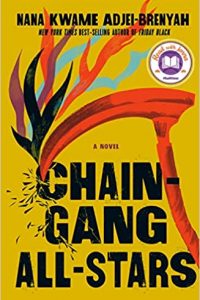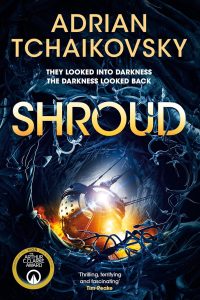Ian Mond Reviews The Actual Star by Monica Byrne
 The Actual Star, Monica Byrne (Harper Voyager 978-0-063-00291-3, $27.99, 624pp, hc) September 2021.
The Actual Star, Monica Byrne (Harper Voyager 978-0-063-00291-3, $27.99, 624pp, hc) September 2021.
Monica Byrne’s The Actual Star is told across two millennia with alternating chapters straddling three different time periods. The story begins in the Ancient Maya city of Tzonya in the last month of 1012 AD, where twin brother and sister Ajul and Ixul are preparing for their ascension to the throne, following the death of their parents. Tzonya is also the location of the sacred cave of Actun Tunichil Muknal, believed to be an entry point to Xibalba, the Maya underworld. Skip to 2012, the year the Maya allegedly prophesied the end of the world (not that they ever made this claim). In the small (fictional) town of Anoong MN, 19-year-old Leah Oliveri has decided, against her mother’s wishes, to travel to Belize and follow in the footsteps of her Maya father. There she will encounter two travel guides, twin brothers Javier and Xander, who will separately lead Leah to the Great Cave, to Actun Tunichil Muknal, where her destiny awaits. Jump a further thousand years to 3012, where the Diluvian Age has come to an end, capped off by the melting of the last of the world’s ice. Sofist Niloux DeCayo views this auspicious moment as an opportunity for the global community to break free of Laviaja, a form of nomadism sustained by a belief in Xibalba and the miraculous disappearance of Saint Leah from the Great Cave a thousand years earlier. It’s a heretical notion that threatens to not only upend four centuries of peace but humanity’s best attempt to establish a global utopia.
From the opening pages of The Actual Star, it becomes abundantly clear why it took Monica Byrne seven years to write this novel. Like Nicola Griffith’s Hild (which gets a hat tip in the acknowledgements), Byrne’s depiction of Maya civilisation combines scholarly work with an appreciation and skill for world-building. As she states in an Author’s Note, ‘‘describing the specific Maya people who lived in 1012 lowland Belize is as much an act of imagination as research.’’ Byrne’s efforts, though, more than pay off, her lush prose evoking a society where fear and reverence of the gods determines every aspect of Maya life.
Given the amount of work Byrne spends on fleshing out Maya society, you could forgive her for taking it a little easier when predicting the future. But the same eye for meticulous detail is apparent in the sections of the novel set a thousand years from now. Byrne’s take on the future is a heady blend of high-tech (augmented reality, artificial intelligence, and ubiquitous 3D printing) and mysticism, where the disappearance of Leah and the subsequent vanishing of thousands of other people has led to a belief in the physical reality of Xibalba. What I enjoyed most about Byrne’s vision of the 31st century is that, despite the anxiety and uncertainty of the current moment, she is brave enough to consider a future where we not only survive the coming climate catastrophe but flourish.
It’s not all about worldbuilding though; aside from being a sex-positive novel, The Actual Star raises questions about identity, about gender and sexual preference, about the limits and constraints inherent in any true utopia. These issues are explored with a great deal of wit, passion, and intelligence, but what stands out is the book’s attitude to the past. I loved how the challenges Byrne confronts piecing together Maya society are reflected in Niloux and her rival Tanaaj’s struggle to accurately represent the life of Saint Leah, Javier, and Xander. Byrne does more, though, than illustrate the pitfalls of interpreting the past. Her dedication to historical accuracy pays respect to those academics and archeologists who spend their lives exploring antiquity. And in choosing the title The Actual Star, a reference to Venus, the only constant seen by all three time periods, Byrne reinforces the idea that, despite the tendency for history to be forgotten or become folklore, we always remain connected to our ancestors, even if we are not conscious of it. This sentiment is beautifully rendered in the final quarter of the book, as the three timelines converge in ways both figurative and literal, providing a moving end to a terrific novel.
This review and more like it in the September 2021 issue of Locus.
 While you are here, please take a moment to support Locus with a one-time or recurring donation. We rely on reader donations to keep the magazine and site going, and would like to keep the site paywall free, but WE NEED YOUR FINANCIAL SUPPORT to continue quality coverage of the science fiction and fantasy field.
While you are here, please take a moment to support Locus with a one-time or recurring donation. We rely on reader donations to keep the magazine and site going, and would like to keep the site paywall free, but WE NEED YOUR FINANCIAL SUPPORT to continue quality coverage of the science fiction and fantasy field.
©Locus Magazine. Copyrighted material may not be republished without permission of LSFF.







